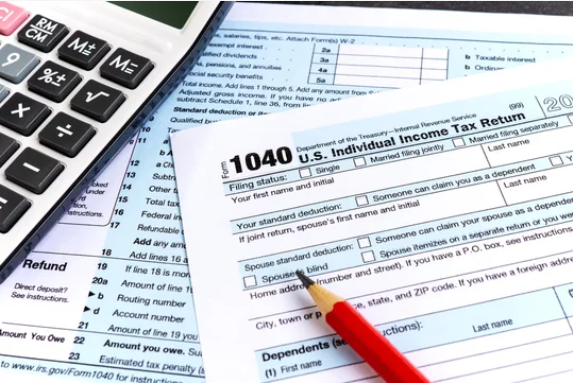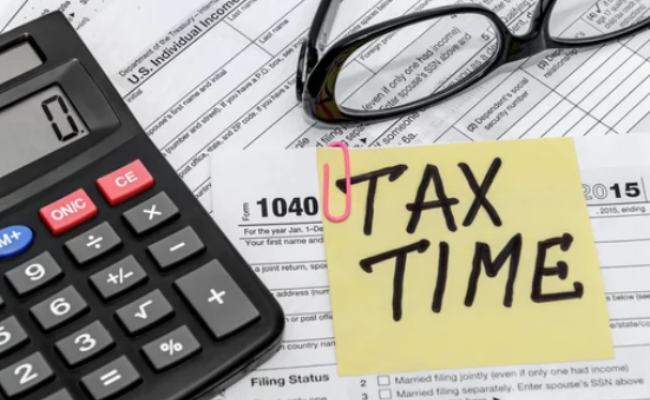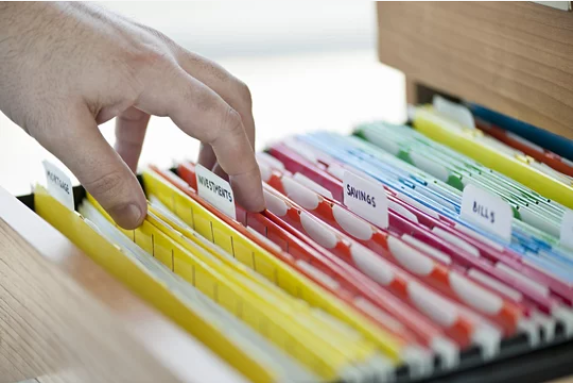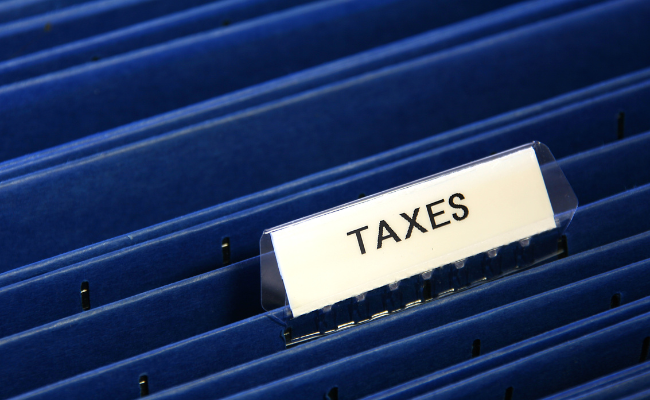2023 Tax Season: How to File Your Taxes Quickly and Efficiently
Whether you’re a first-timer or a seasoned taxpayer, you must make sure you file your taxes accurately and efficiently. With the tax code constantly changing and new regulations being introduced each year, it can be overwhelming to keep up.
However, with a little preparation and organization, filing your taxes can be a relatively straightforward process.
Keep reading to answer the “when can I file taxes in 2023?” question. We’ll explore tips to help you file taxes efficiently and avoid unnecessary stress or headaches this tax season.
Why File Taxes?

Photo credit: Adobe Stock
Filing taxes is required by law in the United States. It provides a way for individuals and businesses to report their income and calculate the taxes owed to the government.
The government uses tax revenue to fund public services like infrastructure, education, healthcare, and national defense.
Overview of the 2023 tax season
The IRS has announced the start of when you can file your 2023 taxes. The IRS started accepting and processing 2022 tax returns on January 23.
It is expected that over 168 million individual tax returns will be filed before the tax deadline on April 18, 2023. The deadline is normally April 15, but taxpayers have another 3 days to file due to this year’s Emancipation Day holiday.
The IRS has implemented additional measures for 2023, given the significant impact of the pandemic on the previous three tax seasons.
Benefits of filing taxes quickly and efficiently
Filing taxes quickly and efficiently can provide the following benefits:
- Early refunds
- Avoiding late filing penalties
- Tax-related scams
- Stress reduction
Preparing to File Your Taxes

Photo credit: Adobe Stock
The 2023 tax season begins at the end of January. A W-2 form from your employer should be in your mailbox around then.
Since many employers use a digital payroll system for direct deposit, you might also find your W-2 online. Freelancers should also be looking for a 1099 form from each client.
You may also like: Tax refund taking too long? Try these steps
Deduction and credit documentation
When claiming deductions and credits on tax returns, it’s important to have the proper documentation to support the claim.
Documentation may include receipts, invoices, statements, and other records that prove the taxpayer is eligible for tax credits or deductions.
Previous tax returns refer to the tax filings submitted by individuals or businesses for prior tax years. These returns record the taxpayer’s income, deductions, and tax liability for a given year.
Choosing a tax preparation method
Tax season can be tricky for many people. Here are some ways to help you prepare your taxes every season:
DIY tax preparation software assists taxpayers in preparing and filing their tax returns.
It guides users through the tax filing process and other relevant information. This 2023 tax refund calculator helps to calculate tax liability or refund.
A tax professional will ensure your tax returns are prepared accurately and comply with tax laws and regulations. They have the expertise and can guarantee an accurate job with regard to federal and state taxes.
IRS Free File is a free online service that allows taxpayers to prepare and file their federal tax returns electronically.
Tips for Filing Your Taxes Quickly and Efficiently

Photo credit: Adobe Stock
Organizing your documents and information
Organizing your documents and information is an important step in preparing your tax return accurately and efficiently.
Gather all documents related to your income, deductions, and credits. These include W-2, 1099, receipts for charitable donations, and medical expenses.
Set up a filing system to organize your tax documents and information. Consider using a file folder or binder to keep all documents in one place.
Organize your documents by categories: income, deductions, and credits. This will help you to easily locate the documents you need when preparing your tax return.
Maximizing deductions and credits
Maximizing deductions and credits is a key strategy for reducing tax liability and increasing tax refunds.
Consider itemizing significant deductions instead of taking the standard deduction. These can be mortgage interest, property taxes, charitable donations, or medical expenses. It may result in a larger deduction and lower tax liability.
Reviewing tax law changes for any new tax laws or regulations that may impact your tax return is important. You can stay updated on tax law changes by regularly checking the IRS website or other reliable tax information sources.
Using tax preparation software to identify deductions and credits
Tax software can be useful for identifying benefits and deductions you may be eligible for. It can streamline tax preparation and identify more deductions and credits.
Avoiding common mistakes
When you file your taxes, it helps to avoid common mistakes that may affect you or your business negatively. You can do so by:
- Double-check information for accuracy.
- Being aware of filing deadlines and requirements for requesting an extension.
- E-filing instead of mailing a paper return.
Post-Filing Considerations
Now you’ve done the hard part, but that’s not all. After filing your taxes, there are follow-up actions that you must take to ensure that everything has been rightly done.
Tracking your refund
Tracking your 2023 tax refund schedule is a good way to keep tabs on the status of your tax return. You can get an estimated refund date.
You can check the IRS website or use the mobile app. For any refunds delayed, call the IRS toll-free at 1-800-829-1040 and follow the prompts to confirm your refund status.
Setting up direct deposit for your refund
Setting up direct deposit for your tax refund is a convenient and secure way to receive your refund. When you file your tax return, indicate that you want your refund via direct deposit.
You must provide your bank account number and routing number on your tax return. Once your tax return has been completed and refund approved, the IRS will deposit your refund within 21 business days.
Addressing errors or omissions
While filing your taxes, you might make some errors or omissions. Don’t panic—there are a few ways to fix these tax situations.
You should correct your tax return if you made an error on your original return. Also, if you need to claim additional deductions or credits or receive additional tax documents after you file your return.
You must file Form 1040-X, Amended US Individual Income Tax Return, to amend your tax return. You must also attach any schedules or forms that have changed due to the amendment.
Once you have completed Form 1040-X, the IRS allows filing electronically. It can take several weeks for the IRS to process your amended return.
You can check the file status of your amendment using the “Where’s My Amended Return?” tool on the IRS website.
If the IRS notifies you, taking it seriously and responding promptly is important. Begin by reading the notice carefully to understand the issue and action the IRS requests.
If the IRS questions a particular item on your tax return, gather any relevant documents supporting your claim.
Keep a copy of all correspondence you send to the IRS and any responses you receive. Make sure to respond by the deadline to avoid additional penalties or interest.
Related Articles
Preparing for next year’s tax season
Track your expenses and earned income tax credit throughout the year. This can include pay stubs, bank statements, receipts, and other documentation.
As you receive tax documents throughout the year, keep them organized in a file or folder. This can include W-2s, 1099s, and other forms. Most importantly, use a tax calculator or hire a tax preparer to help you next season.
Conclusion
Filing taxes can be complex. If you’re still clueless as to when can you file taxes for 2023, the guidelines above will surely help. However, following the steps in this article will ensure you file your tax as stress-free as possible.
Sponsored Advertising Content:
Advertorial or Sponsorship User published Content does not represent the views of the Company or any individual associated with the Company, and we do not control this Content. In no event shall you represent or suggest, directly or indirectly, the Company's endorsement of user published Content.
The company does not vouch for the accuracy or credibility of any user published Content on our Website and does not take any responsibility or assume any liability for any actions you may take as a result of reading user published Content on our Website.
Through your use of the Website and Services, you may be exposed to Content that you may find offensive, objectionable, harmful, inaccurate, or deceptive.
By using our Website, you assume all associated risks.This Website contains hyperlinks to other websites controlled by third parties. These links are provided solely as a convenience to you and do not imply endorsement by the Company of, or any affiliation with, or endorsement by, the owner of the linked website.
Company is not responsible for the contents or use of any linked website, or any consequence of making the link.
This content is provided by New Start Advantage LLC through a licensed media partnership with Inquirer.net. Inquirer.net does not endorse or verify partner content. All information is for educational purposes only and does not constitute financial advice. Offers and terms may change without notice.


